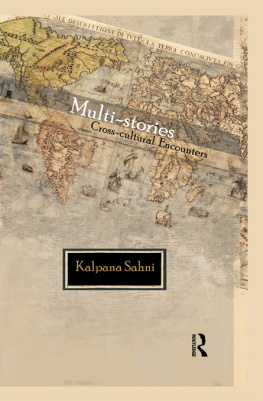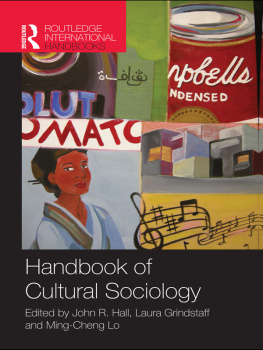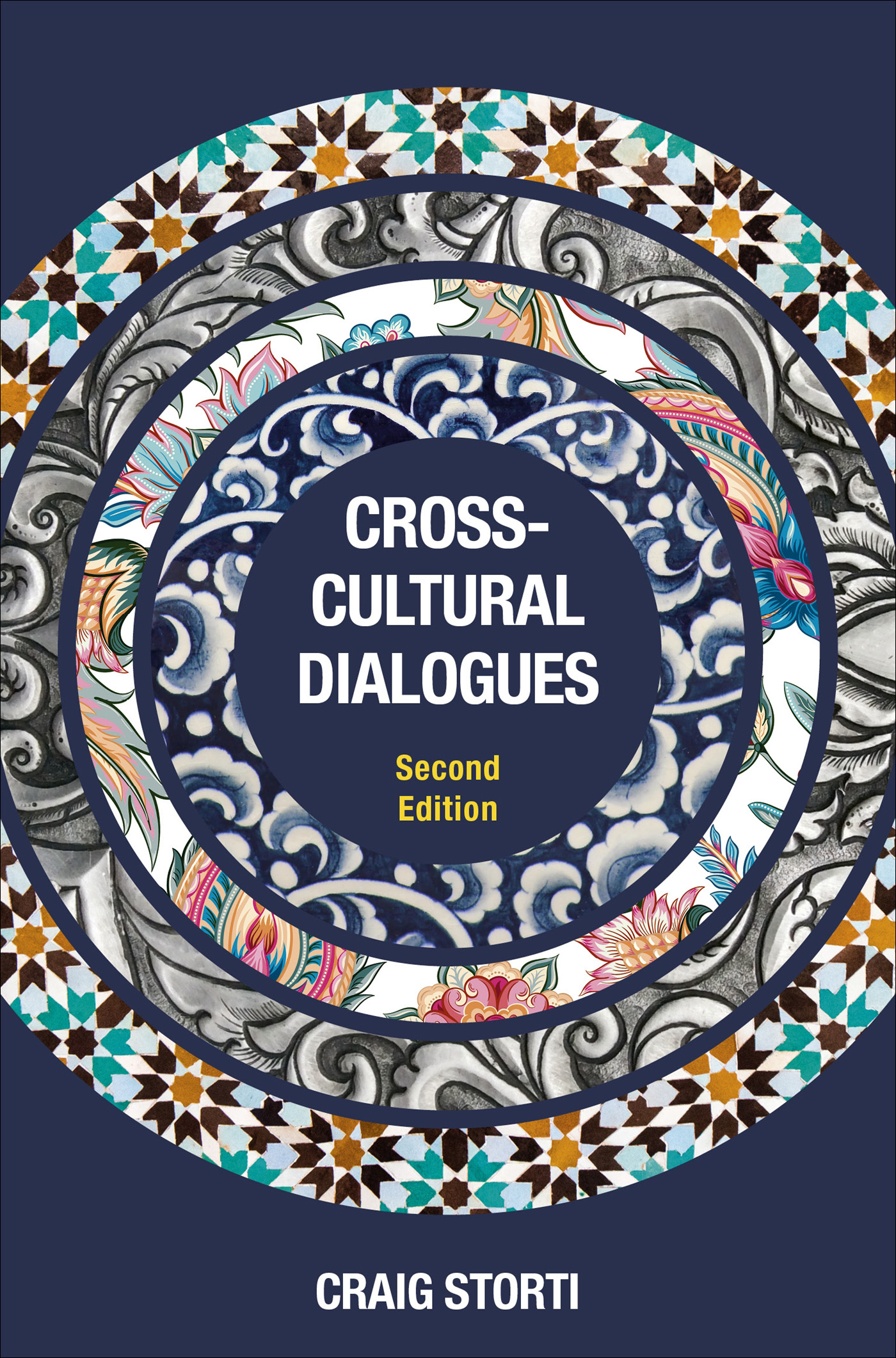Contents
Guide
Page List
This is an indispensable and invaluable book for anyone involved in teaching intercultural communication, who is engaged in intercultural training or who simply wants to gain greater understanding on how to interact successfully with those across cultural differences.
Darla Deardorff, editor, The Sage
Handbook of Intercultural Competence
Knowledge and wisdom derived from Stortis many years as an internationally renowned consultant and writer shine through. The book can be enjoyed by the individual reader preparing for intercultural encounters and also as a tool for trainers and consultants.
Peter Franklin, author The Mindful International
Manager, professor of international management,
Konstanz University of Applied Sciences
The insightful cross-cultural dialogues set the gold standard for intercultural communication and are an invaluable tool for global citizens.
Ranjini Manian, author of Doing Business in India
for Dummies, Founder-CEO of Global Adjustments
This is an excellent book for professionals working with people from various cultures, both in the United States and abroad. Through sets of dialogues, the book provides a nuanced explanation of cross-cultural misunderstandings that very often are predetermined to happen because of the underlying cultural differences. I work with international exchange participants from various cultures and have witnessed numerous occasions where similar dialogues occur and misunderstandings happen. I refer to this book and use the dialogues when I conduct discussions on cross-cultural communications.
Zara Hovhannisyan, Senior Program Manager,
Teacher Training Programs, American Councils
for International Education, Washington, DC.
Cross-Cultural Dialogues
74 Brief Encounters with Cultural Difference
SECOND EDITION
by Craig Storti
Craig Storti is available as a trainer and consultant in the subjects covered in this book.
His email is
His website is craigstorti.com
His telephone number is 410-346-7336.
Craig Storti is also the author of:
- The Art of Crossing Cultures
- The Art of Coming Home
- The Art of Doing Business across Cultures
- Culture Matters
- Figuring Foreigners Out
- Americans at Work: A Guide to the Can-Do People
- Speaking of India: Bridging the Communication Gap When Working with Indians
Cross-Cultural Dialogues
74 Brief Encounters with
Cultural Difference
SECOND EDITION
by Craig Storti

First published in the USA in 2017 by Intercultural Press, a Nicholas Brealey Publishing Company
23 22 21 20 19 18 17 1 2 3 4 5 6 7 8 9 10
Copyright Craig Storti 2017, 1994
The right of Craig Storti to be identified as the Author of the Work has been asserted by him in accordance with the Copyright, Designs and Patents Act 1988.
All rights reserved. No part of this publication may be reproduced, stored in a retrieval system, or transmitted, in any form or by any means without the prior written permission of the publisher, nor be otherwise circulated in any form of binding or cover other than that in which it is published and without a similar condition being imposed on the subsequent purchaser.
All characters in this publication are fictitious and any resemblance to real persons, living or dead, is purely coincidental.
Library of Congress Cataloging-in-Publication Data
Names: Storti, Craig, author. Title: Cross-cultural dialogues : 74 brief encounters
with cultural difference / by Craig Storti.
Description: Second edition. | London ; Boston, MA : Intercultural Press, a
Nicholas Brealey Publishing Company, [2017] | Includes bibliographical references and index.
Identifiers: LCCN 2016021003 (print) | LCCN 2016037185 (ebook) | ISBN
9781941176153 (pbk.) | ISBN 9781941176177 (ebook)
Subjects: LCSH: Intercultural communication. | Cross-cultural orientation.
Classification: LCC GN345.6 .S76 2017 (print) | LCC GN345.6 (ebook) |
DDC 303.48/2dc23
LC record available at https://lccn.loc.gov/2016021003
ISBN 978-1-94117-615-3
U.S. eBook ISBN 978-1-94117-617-7
U.K. eBook ISBN 978-1-47364-363-5
Cover images: Courtesy of Shutterstock
Printed in the United States of America
Nicholas Brealey Publishing policy is to use papers that are natural, renewable and recyclable products and made from wood grown in sustainable forests. The logging and manufacturing processes are expected to conform to the environmental regulations of the country of origin.
Nicholas Brealey Publishing
Carmelite House
50 Victoria Embankment
London EC4Y 0DZ
Tel: 020 7122 6000
Nicholas Brealey Publishing
Hachette Book Group
Market Place Center, 53 State Street
Boston, MA 02109, USA
Tel: (617) 523 3801
www.nicholasbrealey.com
For Charlotte,
the Czarina,
with all
my love
Acknowledgments
F or the concept of dialogues, I am deeply indebted to Alfred Kraemer who used this technique in work he did for the army in the 1970s.
As for writing and editing, I am once again deeply grateful to David and Kathleen Hoopes who worked their customary wonders with my text. The manuscript arrived on their mountaintop in Vermont as a passable draftand left as a bona fide book. It was then delivered into the extremely capable hands of Toby Frank and Peggy Pusch who, mirabile dictu, made it even better!
As always, I owe deep and lasting gratitude to my wife Charlotte, who has given so much so that I might have the freedom to write.
Contents
Preface to the
Second Edition
When persons of differing cultural backgrounds attempt to communicate with each other, each makes unwarranted, culturally conditioned assumptions about the other. This makes communication difficult. An exercise was designed to reduce this effect through increased cultural self-awareness. Participants analyze... excerpts from intercultural dialogues, containing subtle manifestations of cultural influences present in [their] society.
Dr. Alfred Kraemer
I n the twenty-three years since the first edition of this book was published, the dialogue has become a widely used technique for teaching intercultural communication, taking its place alongside older and more venerable methodologies such as critical incidents and case studies. While Cross-Cultural Dialogues has played an important role in popularizing the technique, the credit for imagining this simpleand brilliantconcept lies elsewhere, with Dr. Alfred Kraemer, who pioneered the dialogue approach when he was Chief of Research and Development for the U.S. Army, and to whom I remain as deeply indebted today as I was two decades ago.
What are dialogues, and what accounts for their enduring appeal? A dialogue in this case is a harmless conversation that causes great harm, a brief interaction between two speakers from different cultures wherein, due to a cultural difference, a misunderstanding occurs. As neither speaker is aware of the cultural difference, neither is aware of the resulting misunderstanding. Dialogues are constructed so that a hint of the cultural difference is embedded in the conversation, meaning that one or both speakers, as well as anyone reading the dialogue, would be alerted to a possible problem if only they could find the clue. The misunderstanding, in short, is not inevitable.











